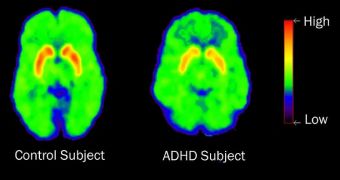An international group of researchers has recently determined that inactivating a protein receptor in the gastrointestinal tract can lead to the development of symptoms usually associated with attention deficit hyperactivity disorder (ADHD) in mouse models. The same thing may be happening in humans.
Investigators found that this intestinal membrane receptor protein, called guanylyl cyclase-C (GC-C), is also found in critically-important areas of the brain. When the team inactivated it in unsuspecting lab mice, they noticed an increase in behaviors such as hyperactivity and lack of attention.
Both of these phenomena are related to ADHD in humans. Children and teens who are diagnosed with this condition have a rough time staying focused, but they also tend to be hyperactive throughout the day, PsychCentral reports.
Studies conducted over the past 20 years or so have revealed that GC-C plays an important role in diarrheal disease, in addition to fulfilling other intestinal functions. However, its connection to the brain has not been studied in detail at all.
As such, the team behind the new study focused on this aspect exclusively. Experts from the National Institute of Biological Sciences, in Beijing, China and the Cincinnati Children’s Hospital Medical Center conducted the research.
The Chinese component of the team was led by NIBS neurobiologist Dr. Minmin Luo, whereas the American components was led by CCHMC investigator and pediatrician Dr. Mitchell Cohen. Together, the experts proved for the first time ever that GC-C is linked to neuropsychiatric disorders.
In mice, attention and activity levels are regulated by levels of the neurotransmitter dopamine in the brain. In turn, these concentrations are increased when neurons selectively express GC-C. Full details of the new study appear in the latest issue of the top journal Science.
“The results indicate important behavioral and physiological functions for the GC-C/PKG signaling pathway in the brain. The data also suggest new therapeutic targets for neuropsychiatric disorders related to malfunctions of midbrain dopamine receptors,” Luo explains.
“This could make the GC-C knockout mouse a good research model for ADHD and other behavioral disorders,” Cohen adds. In humans, ADHD is very tightly linked to neural dopamine imbalances.
“Efforts to develop activators or inhibitors of the GC-C/PKG signaling pathway may lead to novel treatments for other disorders, such schizophrenia, Parkinson’s disease and addiction,” the CCHMC researcher concludes.

 14 DAY TRIAL //
14 DAY TRIAL //